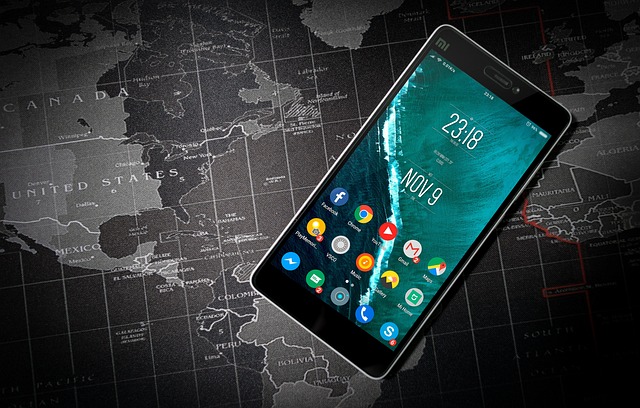Imagine waking up in the morning and having your coffee ready, your favorite news articles curated, and your workout routine planned—all thanks to your smartphone. Welcome to the era of mobile technology, where apps have become our digital assistants, making life easier and more engaging. But how exactly do these tiny icons on our screens manage to streamline our daily routines and keep us connected? Let’s dive in and explore the fascinating world of mobile technology and engagement.
The Evolution of Mobile Technology
Remember the days when phones were just for making calls? Fast forward to today, and our smartphones are mini-computers that fit in our pockets. The evolution of mobile technology has been nothing short of revolutionary. From the first brick-like phones to the sleek, touchscreen devices we use now, the journey has been incredible.
But what drove this evolution? The answer lies in our insatiable appetite for convenience and connectivity. As our lives became busier, the need for tools that could simplify tasks and keep us connected on the go became paramount. Enter the era of smartphones and apps.
The Rise of the App Economy
The app economy has grown exponentially over the past decade. According to a report by App Annie, the global app market is expected to reach $156 billion by 2022. But what makes apps so popular? The answer is simple: they make our lives easier.
Think about it. Whether it’s ordering food, booking a cab, or managing your finances, there’s an app for almost every task. Apps have become our go-to solutions for everyday problems, and their popularity shows no signs of slowing down.
How Apps Make Life Easier
Let’s break down how apps make our lives easier across various aspects:
Productivity and Organization
Productivity apps are a game-changer for anyone looking to stay organized and efficient. Tools like Trello, Asana, and Evernote help you manage tasks, set reminders, and collaborate with others seamlessly. Imagine having a personal assistant that never forgets a task or misses a deadline—that’s what productivity apps offer.
For example, Trello uses a visual board system to help you organize tasks and projects. You can create lists, add cards, and set due dates, making it easy to track progress and stay on top of your to-do list. Evernote, on the other hand, is a digital notebook that lets you capture ideas, create notes, and sync them across all your devices.
Health and Fitness
Staying fit and healthy has never been easier, thanks to health and fitness apps. From tracking your steps to monitoring your heart rate, these apps provide valuable insights into your well-being. Apps like MyFitnessPal and Fitbit help you set fitness goals, track your progress, and stay motivated.
MyFitnessPal, for instance, allows you to log your meals, track your calorie intake, and set weight loss goals. It also provides a vast database of foods and recipes, making it easy to make healthier choices. Fitbit, on the other hand, tracks your physical activity, sleep patterns, and heart rate, giving you a comprehensive overview of your health.
Entertainment and Social Connection
Apps have also revolutionized the way we entertain ourselves and stay connected with others. Social media apps like Instagram, Facebook, and Twitter keep us updated with the latest trends and news from around the world. Streaming apps like Netflix, Spotify, and YouTube provide endless hours of entertainment at our fingertips.
Imagine being able to watch your favorite shows, listen to music, and connect with friends and family, all from the comfort of your couch. That’s the power of entertainment and social media apps. They bring the world to you, making it easier to stay connected and entertained.
The Science Behind App Engagement
But what makes apps so engaging? The answer lies in the psychology of user experience (UX) design. App developers use various techniques to keep users hooked and coming back for more.
Gamification
Gamification is the process of applying game-design elements and principles to non-game contexts to make them more engaging. Apps use gamification to motivate users to achieve their goals, whether it’s completing a task, reaching a fitness milestone, or unlocking rewards.
For example, the language learning app Duolingo uses gamification to make learning a new language fun and engaging. Users earn points, level up, and compete with friends, making the learning process more enjoyable and motivating.
Personalization
Personalization is another key factor that makes apps engaging. By tailoring content and features to individual users, apps can provide a more relevant and enjoyable experience. Personalized recommendations, notifications, and user interfaces make users feel valued and understood.
For instance, Spotify uses personalization to curate playlists and recommend songs based on users’ listening habits. This personalized approach makes the app more engaging and keeps users coming back for more.
Push Notifications
Push notifications are a powerful tool for keeping users engaged with apps. By sending timely and relevant messages, apps can remind users to complete tasks, provide updates, and offer incentives. However, it’s essential to strike the right balance and not overwhelm users with too many notifications.
For example, a fitness app might send a push notification reminding users to log their daily steps or complete a workout. These notifications serve as gentle nudges, keeping users motivated and engaged with the app.
The Future of Mobile Technology
As we look to the future, mobile technology is poised to become even more integrated into our daily lives. Emerging technologies like augmented reality (AR), virtual reality (VR), and the Internet of Things (IoT) are set to revolutionize the way we interact with our devices and the world around us.
Augmented Reality (AR)
AR overlays digital information onto the real world, creating an immersive and interactive experience. Apps like IKEA Place and Pokémon GO use AR to enhance user engagement and provide unique experiences.
For example, IKEA Place allows users to visualize how furniture would look in their homes before making a purchase. This AR feature makes the shopping experience more engaging and helps users make informed decisions.
Virtual Reality (VR)
VR creates a fully immersive digital environment, transporting users to different worlds. VR apps are used for gaming, education, and even therapy, providing engaging and memorable experiences.
For instance, the VR app Tilt Brush allows users to paint in a 3D space, creating stunning and immersive artworks. This VR experience is not only engaging but also encourages creativity and self-expression.
Internet of Things (IoT)
IoT refers to the network of physical devices embedded with sensors, software, and connectivity, enabling them to collect and exchange data. IoT apps allow users to control and monitor their smart devices from their smartphones, making life more convenient and connected.
For example, the Nest app allows users to control their smart thermostat, smoke detector, and security cameras from their smartphones. This IoT integration makes it easy to manage home security and energy consumption, providing peace of mind and convenience.
Case Studies: Apps Making a Difference
Let’s take a look at some real-world examples of apps that are making a significant impact on people’s lives:
Headspace: Mindfulness and Meditation
Headspace is a mindfulness and meditation app that helps users reduce stress, improve focus, and enhance overall well-being. With guided meditations, sleep sounds, and mindfulness exercises, Headspace provides a comprehensive toolkit for mental health.
For instance, the app offers a “Daily Calm” feature that provides a new meditation each day, helping users establish a regular mindfulness practice. Headspace also offers specialized content for different scenarios, such as stress relief, sleep improvement, and focus enhancement.
Strava: Fitness Tracking and Social Connection
Strava is a fitness tracking app that allows users to record their workouts, set goals, and connect with a global community of athletes. With features like route tracking, leaderboards, and social sharing, Strava makes fitness more engaging and motivating.
For example, the app’s “Segments” feature allows users to compare their performance on specific routes with other athletes, fostering a sense of competition and camaraderie. Strava also offers challenges and virtual races, encouraging users to push their limits and achieve their fitness goals.
Mint: Personal Finance Management
Mint is a personal finance management app that helps users track their spending, create budgets, and manage their money more effectively. With features like bill reminders, credit score monitoring, and investment tracking, Mint provides a comprehensive overview of users’ financial health.
For instance, the app’s “Budget” feature allows users to set spending limits for different categories, such as groceries, dining, and entertainment. Mint also provides personalized insights and tips to help users save money and achieve their financial goals.
Conclusion: Embracing the Power of Mobile Technology
As we’ve seen, mobile technology and apps have become integral parts of our daily lives, making tasks easier and more engaging. From productivity and organization to health and fitness, entertainment, and social connection, apps offer countless benefits that enhance our well-being and convenience.
The future of mobile technology is bright, with emerging technologies like AR, VR, and IoT set to revolutionize the way we interact with our devices and the world around us. As we continue to embrace the power of mobile technology, it’s essential to stay informed and adapt to the ever-changing landscape.
So, the next time you pick up your smartphone, take a moment to appreciate the incredible power it holds. From managing your finances to staying connected with loved ones, your smartphone is a gateway to a world of convenience and engagement. Embrace it, and let it make your life easier and more fulfilling.
FAQs: Mobile Technology and Engagement
Q: How do apps make our lives easier?
A: Apps make our lives easier by streamlining tasks, providing valuable insights, and keeping us connected and entertained. From productivity and organization to health and fitness, entertainment, and social connection, apps offer countless benefits that enhance our well-being and convenience.
Q: What is the app economy?
A: The app economy refers to the market for mobile applications, including their development, distribution, and monetization. It encompasses various sectors, such as gaming, productivity, health and fitness, and social media, and is expected to reach $156 billion by 2022.
Q: How do apps keep users engaged?
A: Apps keep users engaged through techniques like gamification, personalization, and push notifications. By making tasks more enjoyable, tailoring content to individual users, and sending timely reminders, apps create a more engaging and motivating experience.
Q: What is the future of mobile technology?
A: The future of mobile technology is bright, with emerging technologies like AR, VR, and IoT set to revolutionize the way we interact with our devices and the world around us. These technologies will create more immersive and connected experiences, making our lives even more convenient and engaging.
Q: How can I make the most of mobile technology?
A: To make the most of mobile technology, stay informed about the latest trends and apps, and embrace the power of your smartphone. Use apps to streamline tasks, stay connected with loved ones, and enhance your well-being. Experiment with new features and technologies, and adapt to the ever-changing landscape.

